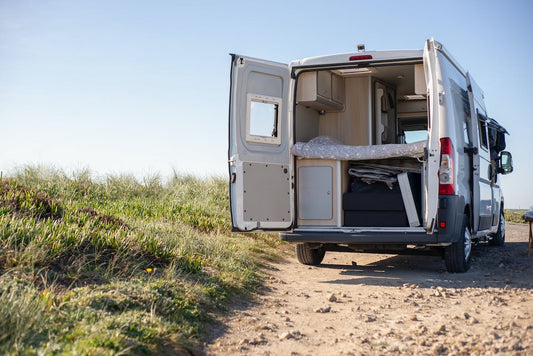

Liquid Rubber is an environmentally friendly product that has no VOCs, solvents or fumes - it is a non-flammable, water-based acrylic material.
This means Liquid Rubber is perfectly safe in all situations - even to use as a waterproofing product for "potable" (drinking) water.
Liquid Rubber is an emulsion that is comprised of a mix of various products among which is a bitumen emulsion.

Liquid Rubber has actually included emulsions that trap these particles and so the age old signs of seeping no longer occurs.
- We highly recommend using a flexible tile adhesive, so it is compatible with the flexibility of Liquid Rubber.
- One of the many unique properties of Liquid Rubber is EXTREME FLEXIBILITY - which is one of the main reasons we, Findlay-Evans Waterproofing, use this waterproofing product ourselves on our own projects.

Extreme Flexibility of Liquid Rubber
- All buildings go through normal climatic expansion and contraction due to thermal conditions.
-
Flexibility allows the waterproofing membrane to move with the structure it is bonded to.
-
The harsh Australian climate makes this is even more critical as materials need to move with temperatures of extreme heat to cold.
- If the tile adhesive is too ridged or the waterproofing membrane lacks flexibility - balcony cracking is inevitable - with cracks you get leaks.


Balcony Design & Waterproofing
Either for reasons of design trends and/or due to cost considerations, there are current changes in balcony construction methods which have a direct impact on the success or otherwise of the waterproofing membrane.


- Balcony design has a significant impact on the choice of waterproofing product, the installation method of membrane and tile adhesives used.
- Balcony design has a significant impact on the choice of waterproofing product, the installation method of membrane and tile adhesives used.
- A balcony designed with minimal fall will have water entering down through the tile grout - resulting in moisture “ponding” between the membrane and tiles.
- For balconies designed with minimal falls, the waterproofing membrane must be capable of withstanding moisture sitting for periods of time on the surface - “standing water”.
Leaking Balconies
→ Balconies with minimal fall will have water run below under the tiles and on to the drain points as the grout shrinks.
→ Movement of water under the tiles may take a long time to move as tile adhesives will try to block the movement.
→ We suggest to our tilers to apply adhesive with a notched trowel and run the "line" in the direction of the drain points as help water movement.
→ Tiles adhesives should have the ability to accommodate this "moisture saturation" that occurs while water is slowly moving to balcony drain points.

Balconies and "Ponding" WaterIf the membrane selected cannot withstand ponding water – and many on the market cannot - over time and together with the normal cyclic thermal contraction and expansion of a building, this will cause the membrane material to break down and/or joint failure & cause water leaks.
Ponding water causing a waterproofing membrane to deteriorate. |
Why Balconies Leaks
- We have actually seen numerous failed balcony waterproofing membranes and adhesives due to inability to hold wetness.
- Not all membranes are designed to hold water (or ponding water).
- In some leaking balconies, evidence of this can be seen on the surface area of tiles and grout lines - a whitish film develops - though do not misinterpret this with calcium (salts) seeping up from the screed or the cement grout (if no membrane over screed).
- The whitish/ grey is the tile adhesive re-emulsifying and breaking down due to it being continuously damp.

Balcony Repair Method
- Balcony rectification should ensure the reason for water leaks is not perpetuated.
- This is why it is critical to understand balcony structure & design when resolving water issues.
- Investigation and assessment of the root cause of water leaks is critical – or else water ingress will not be solved and just pushed off to occur at a later time - all over again.

Balcony Repairs & Restoration
- If the balcony membrane has failed, then re-grouting and surface sealing is not the way for permanent repairs.
- This short term solution slow down of stop the water leaks briefly. -- that is until the balcony moves and cracks the grout again and inevitably the balcony will begin to leak all over again.
- However that is until the balcony structure moves and cracks the grout again and then inevitably the balcony will begin to leak all over again.


Tiled Balconies & Waterproofing Products

Tiled balcony with expansion joins
- It is important that appropriate growth joints - expansion joints - are used around the border (surrounding to walls, etc) and within the tile field itself-- particularly if the tiles are a dark colour or really permeable.
- Tiles - especially dark coloured tiles - "grow" in size.
- These tiles actually "grow" in size & there needs to adequate rooms this expansion - otherwise the tiles will push up against each other & possibly damage the tile adhesive & the waterproofing membrane.

|
There are so many various kinds of tile adhesives on the market, and it is practically impossible to name which are compatible to use with Liquid Rubber Waterproofing Membranes. However ............
|





